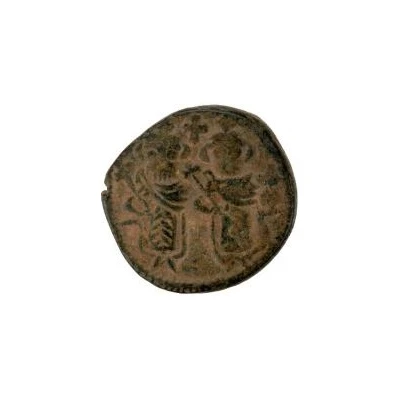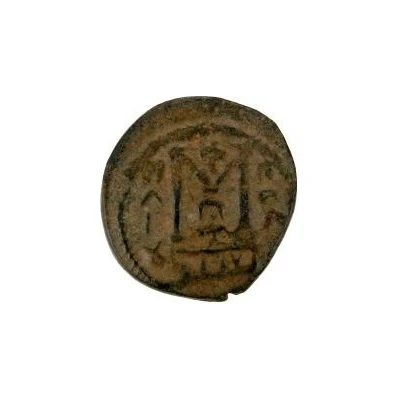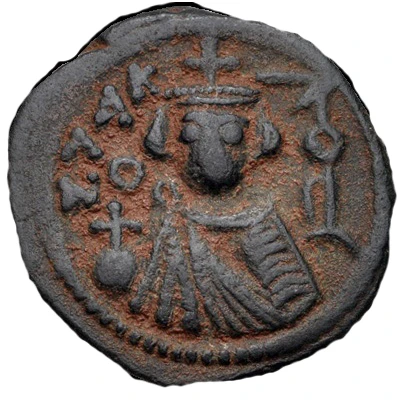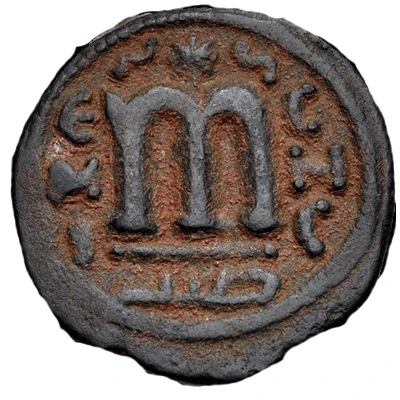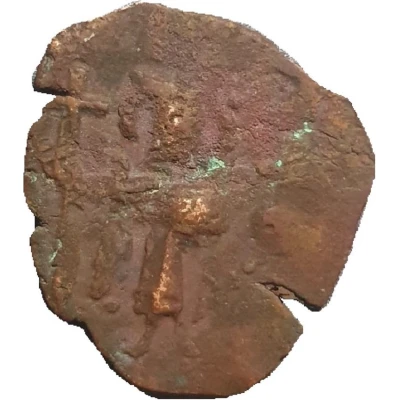
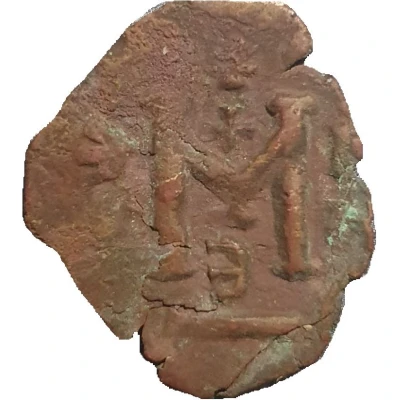

© infierno
Nummus / Fals - Anonymous imitating Constans II Arab-Byzantine ND
| Bronze | 1.84 g | 22.6 mm |
| Issuer | Umayyad Caliphate |
|---|---|
| Type | Standard circulation coin |
| Years | 680-693 |
| Value | 1 Fals / Nummus (1⁄180) |
| Currency | Solidus (661-750) |
| Composition | Bronze |
| Weight | 1.84 g |
| Diameter | 22.6 mm |
| Shape | Round (irregular) |
| Technique | Hammered |
| Orientation | Medal alignment ↑↑ |
| Demonetized | Yes |
| Updated | 2024-10-05 |
| Numista | N#372690 |
|---|---|
| Rarity index | 93% |
Reverse
Large 'M' ☩ on her; ဒ to the left and below; A/N/N/O to the right
Lettering:
M
A/N/N/O
ဒ
Comment
The Umayyad Caliphate was the second ruling government after the death of Muhammad. At this point, the Islamic Empire was limited to the Saudi Arabian peninsula, but began expanding in 622 AD. Their first conquests included Syria, Judaea, Turkey and Persia in 661 and ended in 750 with the victory over the North African nations along with Spain and France. The coins minted in Syria and Judaea imitated the contemporary Byzantine Empire issues, but included symbols of Christianity and Judaism, such as crosses, staurograms, Christograms and menorah, to appease the populace after the conquests.Interesting fact
One interesting fact about this coin is that it is an example of a "fals," which was a term used in the Byzantine Empire to describe a counterfeit coin that was produced to look like an official Byzantine coin. The Umayyad Caliphate, which produced this coin, was known for producing fals coins as a way to undermine the Byzantine economy and gain an advantage in trade. Despite being a counterfeit, this coin is still considered valuable among collectors today due to its historical significance and rarity.
